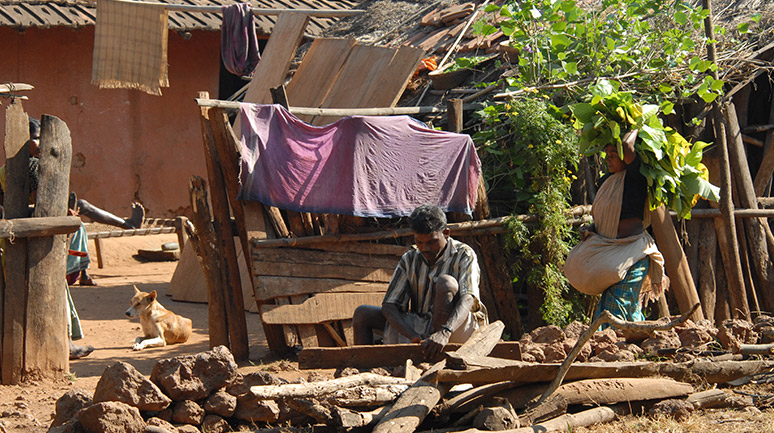Dhurmaras: A Crucible of Conflicts

Struggling to gain recognition and access to their rights as a community living at the fringes of the forests and off the forest produce, the villagers of Dhurmaras attempt to make the best out of the situation they are in, hoping the government will address their issues and see them as contributors to society
C HAITI, KUPALI AND A FEW other women from Dhurmaras walk some 3 to 4 km in the forest to Kakalgur village to purchase bamboo mats woven by the local weavers. These women collect bamboo culms from the forest close to their homes, make thin slices out of them and dry them in the sun, to use for stitching leaf cups. They sell these things in weekly markets, locally called haats. The women are ecstatic about their ability to engage in this trade; they have even taken a bank loan to support their enterprise and have been able to repay their loan installments on time without much difficulty.
During the festive season, in the first quarter of 2016, they started a small shop in their homes, to sell their products. The men of Dhurmaras are engaged in labour work, mostly within the village—repairing roads, doing work with the forest department or working as MGNREGA labourers, along with the women from the hamlet.
For the women of the village, this is the most important time of the year. It is an opportunity to earn a few hundred rupees more from the non-timber forest produce (NTFP) by harvesting and selling these items in the markets nearby.

